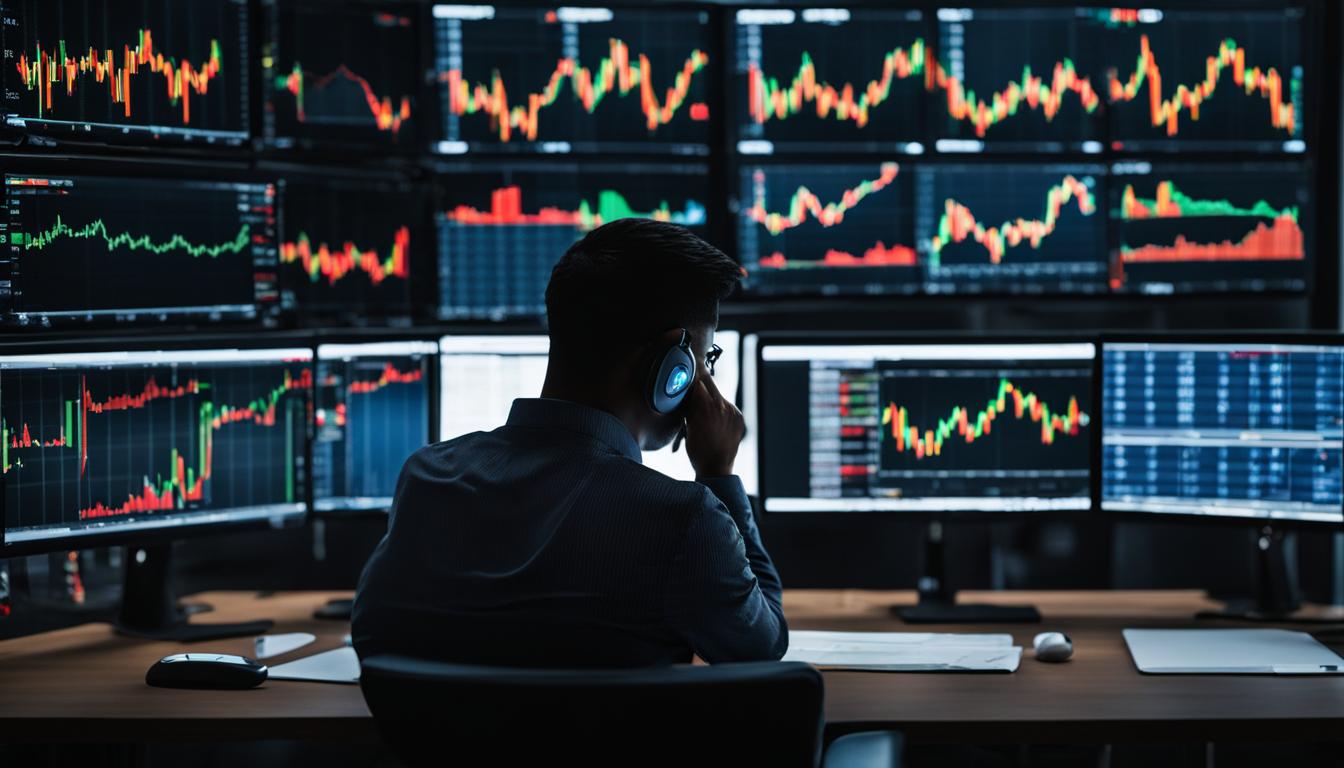What Is Slippage in Trading and How Can You Minimize It?

Introduction
Slippage is a term that traders frequently encounter, yet its implications can often be misunderstood. In trading, slippage refers to the difference between the expected price of a trade and the actual price at which it is executed. This discrepancy can occur due to various factors, such as market volatility or the speed at which an order is filled. Understanding what slippage means and its significance is crucial for anyone engaged in trading activities.
Key takeaway: This article will delve into:
- Causes of slippage in trading
- Impact of slippage on performance
- Effective strategies to minimize slippage
You will gain insights into how market conditions and types of orders affect slippage, along with practical methods to manage and reduce its impact. By mastering these aspects, you can enhance your trading results and maintain consistency in your strategies.
To navigate the world of trading effectively, it’s also important to have a solid understanding of various related concepts. For instance, exercising an option is a common practice in financial markets that requires careful consideration. Additionally, comprehending options settlement procedures is essential for closing contracts successfully.
Moreover, having knowledge about different types of options like call options and put options can significantly expand your range of strategies. Furthermore, exploring how options trading has evolved over the last decades provides valuable insights into current trends and changes in the market.
Technical indicators also play a crucial role in trading decisions. For example, mastering the RSI indicator can provide a strategic edge in the market. Additionally, finding the right broker is essential for successful options trading. Comparing different types of options brokers will help you find the perfect match for your trading goals.
By incorporating these topics into your trading knowledge along with understanding slippage, you can develop a well-rounded strategy that maximizes your chances of success.
Understanding Slippage
Defining Slippage in Finance and Its Specific Application in Trading
Slippage occurs when the actual execution price of a trade differs from the expected price. In trading, this phenomenon is particularly significant as it can affect profit margins and overall trading performance. Slippage is not inherently negative; it simply represents the deviation between the intended transaction price and the price at which the transaction is executed.
Factors Contributing to Slippage
Several factors contribute to slippage:
- Transaction Costs: These include commissions, fees, and other expenses that impact the final execution price.
- Market Impact Liquidity: The availability of buyers and sellers in a market influences slippage. High liquidity typically results in lower slippage, whereas low liquidity can increase it.
- Algorithmic Trading Strategies: Advanced trading algorithms can execute large orders quickly but may also cause significant market impact, leading to slippage.
Linking Slippage to Trading Performance
The relationship between slippage and trading performance is direct. High slippage can erode profits or amplify losses, making it crucial for traders to understand and manage this risk effectively.
To further enhance trading outcomes, traders should explore options exchanges which offer various strategies to mitigate slippage risks. Another key aspect is understanding Call vs Put options trading strategies as they play a significant role in managing risk exposure. Additionally, avoiding broker errors that could exacerbate slippage is essential for maintaining profitability.
By grasping these elements, traders can develop strategies to mitigate slippage’s adverse effects and improve their trading outcomes.
Causes of Slippage
Market Depth and Slippage
Market depth refers to the market’s ability to sustain relatively large orders without impacting the price of the security. When market depth is shallow, even small trades can cause significant price movements, leading to increased slippage. For instance, executing a large trade in a thinly traded stock may push the price up or down sharply, resulting in a less favorable execution price.
Types of Orders and Their Impact on Slippage
Different order types can influence the extent of slippage you experience:
- Market Orders: These orders are executed immediately at the best available price. They often result in higher slippage, especially in volatile markets, because you have no control over the execution price.
- Limit Orders: These allow you to set a maximum or minimum price at which you are willing to buy or sell. While they reduce the risk of slippage, they carry the risk of not getting executed if the market doesn’t reach your specified price.
Hidden Orders and Slippage Effects
Hidden orders are large orders broken down into smaller chunks to conceal their true size from the market. While this tactic aims to minimize market impact, it can exacerbate slippage when these hidden orders suddenly appear and affect supply and demand dynamics.
Average Purchase Price and Slippage Risk
The concept of average purchase price becomes crucial when understanding slippage risk. If you’re averaging into a position over multiple trades, each executed at different prices due to slippage, your overall cost basis might be less favorable than originally planned. This increases your exposure to adverse market movements and impacts your profitability.
Understanding these causes helps you better manage and anticipate slippage. It’s essential for maintaining consistent trading results.
Measurement and Calculation of Slippage
Methods for Measuring Slippage
To measure the extent of slippage in a trade, you can consider factors such as execution price deviation and market impact. Execution price deviation involves comparing the expected trade price with the actual execution price.
Calculation Techniques
Quantifying slippage costs is crucial for understanding its impact on your trading performance. You can calculate these costs by examining the disparity between the expected and actual trade prices. For instance, if you intended to buy a stock at $100 but ended up purchasing it at $101, the slippage cost per share is $1.
Reverse Slippage
Reverse slippage occurs when a trade executes at a more favorable price than anticipated. While often considered beneficial, understanding its implications for specific trading strategies is essential. Reverse slippage can sometimes indicate market inefficiencies or unique liquidity conditions.
Mark-to-Market Valuation
Using mark-to-market valuation helps manage slippage risk for open positions. By regularly updating the value of your holdings based on current market prices, this approach allows you to assess and mitigate potential slippage impacts proactively.
Leverage Ratio (LVR)
In addition to these techniques, considering risk management tools like the Leverage Ratio (LVR) can provide further insights into managing slippage effectively. Understanding how leverage impacts your trades allows you to optimize your positions while minimizing potential slippage risks.
Role of Market Makers
Market makers play a vital role in mitigating slippage through their liquidity provision activities. By continuously quoting buy and sell prices, they help ensure smoother trade executions, thereby reducing slippage risk.
It is worth mentioning that there are other factors to explore regarding slippage, such as the impact of high-frequency trading on slippage. Evaluating these factors alongside the ones discussed here can provide a more comprehensive understanding of slippage dynamics and potential mitigation strategies.
Examples and Case Studies
Slippage in Futures Contracts
Slippage is a common occurrence in futures contracts due to market volatility and liquidity conditions. For instance, trading a highly liquid futures contract such as the E-mini S&P 500 (ES) often results in minimal slippage. However, less liquid contracts like agricultural commodities can experience significant slippage, amplifying the cost of trading.
Case Study: SPY ETF
The SPY ETF, one of the most traded ETFs, provides a classic example of slippage. When placing a market order for SPY during periods of high volatility, you might notice that the execution price deviates from your expected price. This deviation is slippage. By analyzing historical trades, you can observe that during earnings season or significant economic announcements, SPY tends to exhibit higher slippage rates.
Bid Price and Ask Price Spreads
Understanding the role of bid price and ask price spreads is essential in determining the likelihood of slippage. A narrow spread indicates high liquidity and low potential for slippage. Conversely, a wide spread suggests lower liquidity and higher slippage risk. Monitoring these spreads can help you strategize better entry and exit points for your trades.
Exploring these examples highlights how crucial it is to manage slippage effectively to enhance trading performance. To gain further insights into related trading risks, such as the influence of trading halts on options trading, or understand the key distinctions between equity options and index options, which are important for informed investment decisions in the US market, you can refer to these comprehensive guides by FX Options. Additionally, if you’re interested in comparing FX Spot vs FX Options Trading, they have an insightful analysis that can assist skilled traders in making informed financial decisions.
Strategies to Minimize Slippage
Effective risk management is crucial for minimizing slippage in trading activities. Here are some strategies:
1. Use of Limit Orders and Guaranteed Stops
Limit orders allow you to set a specific price at which you want your trade executed, reducing the chances of unfavorable price movements. Guaranteed stops ensure that your trade is executed at a predetermined price, protecting against extreme volatility.
2. Consider Market Liquidity Conditions
The likelihood and severity of slippage events are influenced by market liquidity. Trading in highly liquid markets can reduce slippage, whereas thin markets or those with low trading volumes may increase it.
3. Choose Reliable Trading Providers
The choice of your trading provider can significantly impact your exposure to slippage. Opt for brokers known for efficient execution and minimal transaction costs to mitigate slippage risks.
4. Be Mindful in Volatile Markets
In forex trading, volatile markets are common, and they often exacerbate slippage. Employing strategies such as trading during peak liquidity times or using limit orders can help manage these risks effectively.
5. Understand Positive vs. Negative Slippage
Positive slippage occurs when a trade is executed at a better price than expected, while negative slippage results in a worse price. Handling each scenario involves understanding market conditions and choosing appropriate order types to capitalize on positive slippage or minimize negative impacts.
Understanding these strategies can help you better navigate the complexities of trading and reduce the impact of slippage on your performance.
To further enhance your risk management skills and gain insights into managing risks in volatile markets, explore the Consequences of Decreasing Implied Volatility. This resource delves into the impact of decreasing implied volatility on investment portfolios and offers strategies to manage risks and maximize returns in volatile markets.
For more updates on trading strategies and market conditions, including the Latest Stock Market News, visit our website.
Additionally, if you’re looking to bolster your portfolio with a winning edge in any market condition, consider implementing Neutral Options Strategies. These strategies are designed to provide a winning edge in the world of trading and are ideal for navigating different market conditions.
Conclusion
Understanding and proactively addressing the challenges posed by slippage is crucial to maintaining consistent trading results. Slippage – the difference between expected and actual trade prices – can significantly impact your trading performance. By recognizing the definition of slippage, its causes, and its effects, you can take steps to minimize its impact.
Key points to remember:
- Definition of Slippage: The difference between the expected price of a trade and the actual price at which it is executed.
- Causes of Slippage: Factors such as market depth, order types, hidden orders, and average purchase price all influence slippage.
- Impact of Slippage on Trading: It affects overall trading performance by increasing transaction costs and reducing profitability.
Effective strategies for managing slippage include using limit orders, understanding market conditions, choosing reliable brokers, and distinguishing between positive and negative slippage.
To further enhance your trading strategies, you can explore more about trading options through resources like understanding various components of an option quote or maximizing profits with rolling options. These guides provide comprehensive insights into different aspects of options trading that can help optimize your approach.
Additionally, for a deeper understanding of market dynamics and volatility, consider reading about historical volatility vs implied volatility. This exploration will shed light on how past market trends and expected fluctuations shape your trading strategy.
Addressing slippage effectively ensures that your trading results are more predictable and aligned with your strategies.






